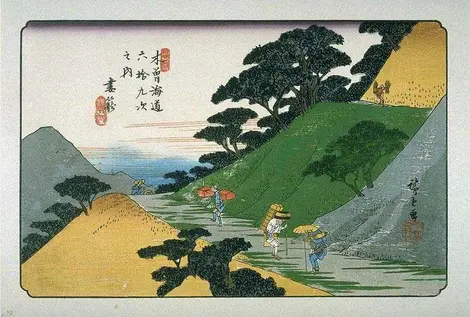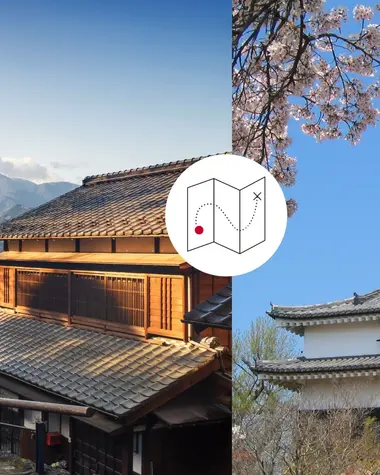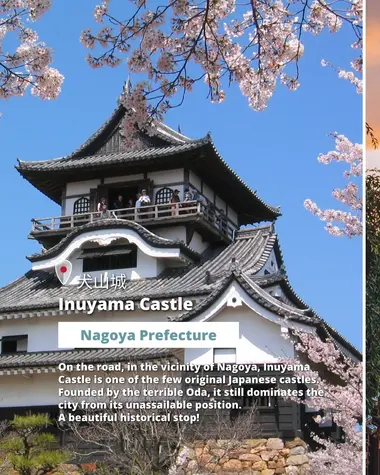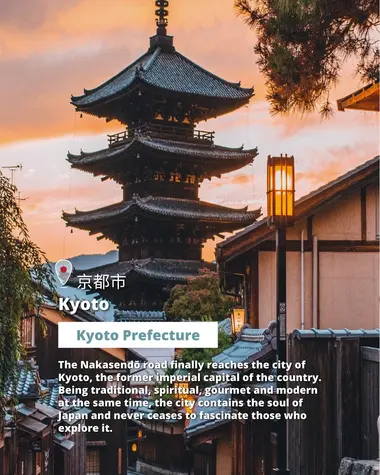The Nakasendo Road
- Published on : 14/11/2016
- by : H.M.
- Youtube
In the heart of the Japanese countryside
Walk the Nakasendo Road, once used by feudal governors, merchants and craftsmen of the Edo period (1603-1868) to connect Tokyo and Kyoto inland.
To walk the Nakasendo road between Magome and Tsumago is to relive days gone by, discovering the Japanese countryside by travelling through through picturesque and well-preserved towns and villages.
The road to the Edo era
This road, with a length of 533km, could usually be covered in about twenty days. Sometimes it required some preparation, particularly when passing through difficult mountain passes like the neck of Torii above Narai. Longer and harder than the Tokaido coastal road, the Nakasendo was a little less traveled.
At that time, there were five structured roads from Tokyo. The other three reached Nikko (the Nikko Kaido), Mutsu Province (the Oshu Kaido) and Kai Province (the Koshu Kaido), where it joined the Nakasendo, which went on through the current prefectures of Saitama, Gunma, Nagano, Gifu and Shiga.
In every valley, a total of 69 stations (or juku), gave travellers and their horses a chance to stop if needed. These juku were painted by Hiroshige and Eisen Keisan in the series of prints called "The 69 views of the Kisokaido".
Between Magome and Tsumago
Today, it is still possible to hike on several preserved sections of these roads. What a thrill to walk on paths that are still paved with the original stones, and cross historical boundaries! The best-known section, and one of the most spectacular, is in the Kiso Valley between Magome and Tsumago, two villages that mark the 42nd and 43rd stations.
Due to the altitude of the villages, it is advisable to start your walk at Magome, one of the eleven stations of the Kiso Valley. In the village center, the tourist office has information about the trail and provides maps in English. Several shops, found in the preserved antique wooden houses, also offer very tasty local products.
The mill to the forest
The trail starts above the village. After passing the tablets (kousatsuba) announcing the orders of the shogun, the well-trodden path winds gently up to a mill. Turn around - the view of the valley and the countryside is beautiful. On the side of the road, a sign advises travelers to ring the bells provided to keep bears away! The bells are numbered, and these little milestones entertain many children.
The path then passes some houses. At the end of the hamlet you'll see a small shrine, seemingly lost in nature. Next comes the pass where signs show you're entering a different prefecture. The vegetation changes, and the trail enters the forest for the descent. A little lower, a timeless cabin offers hot tea and the chance to take a break. Further on, the path splits in two. The left route leads to the waterfalls of Medaki and Odaki.
Beauty of the countryside
Continuing down, the forest thins and the village of of O-Tsumago appears. At the village entrance, a somewhat steep road off to the left passes through fields of rice paddies, for those interested in a detour into the traditional Japanese countryside.
After passing O-Tsumago, take the historic path down to Tsumago itself, a village as well preserved as Magome. After your walk, you now have several options: browse the pretty souvenir shops, visit the local history museum, snack on gohei mochi (a type of traditional rice cake) or settle in a café and enjoy the special atmosphere of this village. If you have time, why not stay on site and extend your trip into traditional Japan?
Return... or carry on
Three or four buses a day make the journey each way, which can be handy for getting back at the end of your hike. For those who drive, there is also ample parking nearby the bus stops in both villages.
Other walks:
If you wish to carry on walking, it is possible to continue following the Nakasendo to Narai (34th station town). Other sections are also signposted in the other valleys. Two examples in the Mino Valley are:
Nakatsugawa Juku to Magome-juku through Ochiai-juku, with the ability to make a detour to Castle Naegi: 9 km
Fujimura Kousatsube (3 km from the station Takenami) to Hosokute juku (13 km from JR Mizunavi)









































